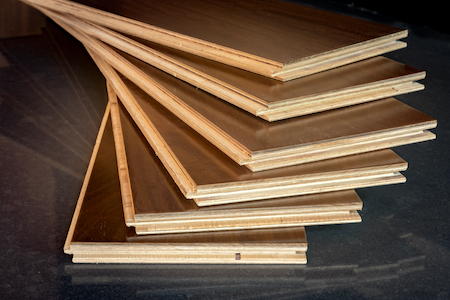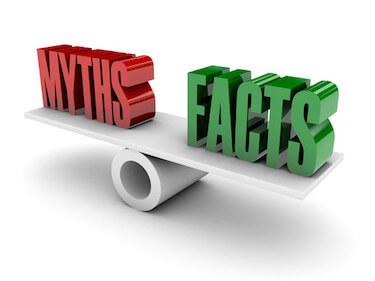Why Your Engineered Floors Should Have an HDF Core
Hardwood flooring is one of the most popular choices for homes all across the Front Range. If you’ve hesitated having it installed in your own home, worrying about durability, your search might lead you to engineered floors.
Where hardwood flooring is made from a solid wood plank, engineered wood flooring is created from a wood veneer wear layer that sits on a multi layer core. One isn’t necessarily better than the other; they offer differences that provide benefits in different situations.
Hardwood can be sanded down and refinished again and again. Engineered wood can only be refinished a handful of times. Engineered wood’s core gives it more stability against warping than traditional hardwood, especially in areas prone to higher humidity levels. Engineered wood may be your flooring choice if you’re looking for wider plank width and varying color choices.
Homeowners and contractors alike turn to engineered hardwood flooring because of its durability, affordability, and better moisture resistance. Where hardwood is a solid piece of wood, engineered hardwood is created using a variety of core materials. These materials continue to change with new technology, making today’s engineered flooring one of the most durable on the market.
Of course, different manufacturers will use different core materials. That’s where it benefits you to pay attention. Some may include plywood. Others use a high-density fiberboard (HDF). What are the advantages of using an HDF core?
What is an HDF core?
On the surface, a high-density fiberboard may seem weaker than plywood. HDF is created from recycled wood materials, such as excess hardwood veneer and other hardwood not used in production. These materials are ground up into sawdust, mixed with resin, and pressed together using high pressure into an ultra-dense core.
 This high pressure process can create a floor core density of up to 60 pounds per cubic foot. The resin used gives it moisture resistance, making it more repellent to water than traditional hardwood. It’s this process that also makes an HDF core higher on the Janka hardness scale than plywood. Some HDF cores reach a rating of 1700 or higher. Compare that to plywood made from poplar that may only reach 500.
This high pressure process can create a floor core density of up to 60 pounds per cubic foot. The resin used gives it moisture resistance, making it more repellent to water than traditional hardwood. It’s this process that also makes an HDF core higher on the Janka hardness scale than plywood. Some HDF cores reach a rating of 1700 or higher. Compare that to plywood made from poplar that may only reach 500.
What’s the purpose of an HDF core?
An HDF core is designed to provide added benefits to what you already love about traditional hardwood. It’s designed to remedy the problems associated with many hardwood floors.
Moisture
Let’s start with moisture. Homeowners often take a step back and think twice about hardwood, especially if they have a busy household with kids and pets. Accidents happen. And if you don’t wipe up a juice spill, if pet accidents go unnoticed, or you’re worried about wet paw prints tracking across your floors each day, you may fall out of love with your hardwood floors as quickly as you fell into it.
Moisture and hardwood simply don’t mix. If left without wiping it up, spills can easily seep into the grain, between the boards, causing warping and cracking.
By adding an HDF core to engineered wood, you’ll have better protection against moisture problems. While it’s still not waterproof, it can stand up to higher humidity levels, which gives you a longer life with fewer potential problems. It also means you won’t have an unsightly floor with boards that pop up from being dry, brittle, warped, and worn out.
Dent resistance
Engineered wood with an HDF core also provides more dent resistance. That higher Janka rating means the core provides better protection against all of the daily activities your family dishes out.
If you prefer the look of a softer wood, the HDF core increases hardness levels, making your wood floors more durable over time. It’s no longer about what hardwood you select. That means you can pay attention to the look and feel of the product, and still get the durability you’re seeking. Engineered wood will stand up better under many different conditions.
Installation
Engineered wood flooring also brings more flexibility to the way it’s installed. Traditional hardwood needs room to expand and contract with the varying conditions inside your home throughout the year. To ensure hardwood looks good spring, summer, winter, and fall, a hardwood floor will have to be nailed into place. If you don’t have suitable subfloor material, that will be an added expense at the time of installation.
Engineered wood floors have more installation options. Engineered wood can be placed over many different subfloors, including concrete. They can be glued into place. Or purchase engineered wood floors with click and lock technology.
The HDF core gives engineered floors more flexibility no matter how you choose to install them.
Additional benefits of engineered wood floors
Traditional hardwood is uniform in the way it’s produced. That can be both a positive and negative, depending on your home. While we all like to assume our homes were built with strict guidelines, careful measurements, that rarely is the case. Because hardwood flooring comes in a standard size, you may have difficulty fitting it into certain spaces.
Do you have interior wood doors that hug closely to the ground? Engineered wood is more flexible in how high the flooring is from the subfloor. Do you have cabinets or appliances that were retrofitted into place? Engineered wood can be more forgiving with the way it lays into place.
Have you always wanted hardwood in your basement? If you’ve ever researched possibilities, you know hardwood isn’t recommended.
Engineered wood can be installed below grade. If you have a moisture issue, you might still think twice about installing engineered wood in the basement. The wood veneer and HDF core are still constructed out of wood. That means that while it’s more stable, moisture can still be an issue.
Engineered wood with an HDF layer is often stronger because the layers are laid perpendicular for less expansion and contraction. This means the fit will be tighter, which is better as the weather changes throughout the seasons.
Are engineered wood floors the right choice for you? Look for an HDF core, and you’ll have one of the most durable flooring choices for your home.

